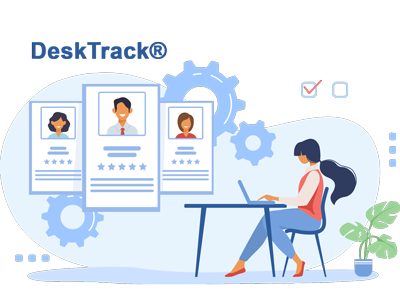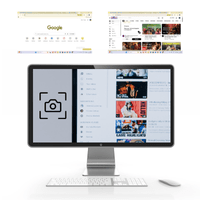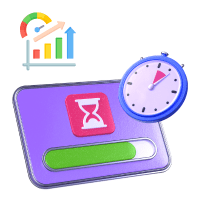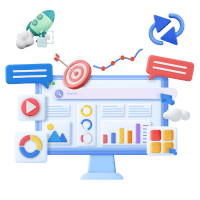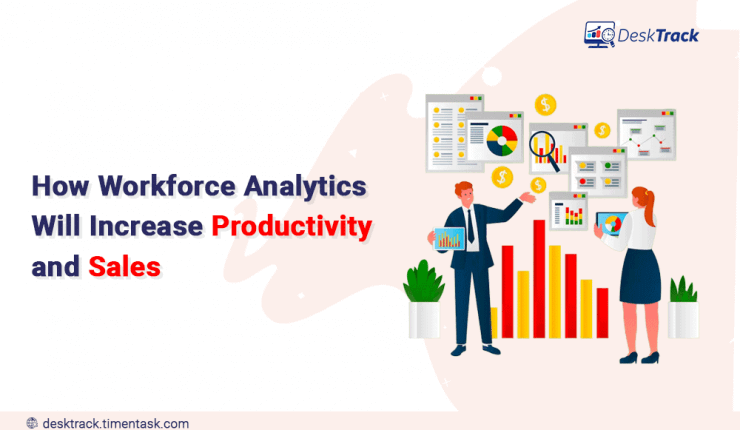
The 2008 financial crisis forced companies to reevaluate talent utilization, leading to efficient operations with leaner teams. Valuable lessons learned during those challenging times still apply in today’s thriving market. One of these essential lessons is the power of workforce analytics, which involves using advanced data to position employees for optimal productivity levels.
Talent is a company’s most valuable asset, but many executives need more reliable data to maximize its value. By embracing workforce analytics and creating a data-driven culture, organizations can maximize productivity, drive growth, and achieve exceptional talent management.
What is Workforce Analytics?
Workforce analytics refers to using data-informed methods to improve workforce planning and management. It involves measuring the impact of workforce behavior and related factors on overall business performance. By leveraging workforce analytics, organizations can make informed decisions and take proactive measures to enhance talent utilization. Analyze Every Detail of workforce productivity.
What Are the Uses of Workforce Analytics?
Recruitment and Talent Management
HR teams can use workforce analytics to monitor their effectiveness in locating, attracting, and managing talent. It permits tracking supply and demand patterns to satisfy present and future recruiting needs.
Employee Retention
Measuring employee retention aids in determining how well hiring, training, and HR management methods work. Low retention rates can affect training costs, productivity, and recruitment costs.
Employee Experience
Workforce analytics includes examining interactions from the point at which candidates enter an organization to the moment at which they depart. Favorable working conditions increase output, engagement, and retention of staff. Employee surveys and performance evaluations can significantly influence employee satisfaction.
Training and Development
Workforce analytics provides key indications for workforce planning. Onboarding, training, and upskilling activities can be evaluated for efficiency and efficacy using metrics like training spend per employee, new skill acquisition, and annual training hours.
How Workforce Analytics Enhance Productivity and Sales
Automation
Workforce analytics offers automation opportunities to reveal important insights about work habits. Analyzing timecard data and productivity levels of employees individually may provide little insight. Still, when collected in real-time for an entire department, analytics can display crucial trends regarding time management’s impact on productivity.
Intelligent Scheduling
Efficient scheduling has been a persistent challenge in human capital management. Workforce analytics allows managers to consider individual employees’ peak performance times and team compatibility. By optimizing schedules, organizations can maximize employee value and overall productivity.
Pattern Recognition
Workforce analytics enables organizations to identify patterns and respond proactively to challenges. Data-driven insights help uncover inefficiencies and make better decisions. For example, if a change in sales strategy leads to increased call times and decreased revenue, workforce analytics can reveal this trend almost instantly, enabling timely adjustments.
Developing Future Leaders
Workforce analytics supports identifying employees with potential for advancement and addressing skill gaps. Managers often make initial judgments about employees’ capabilities, but workforce metrics provide unbiased data on employees’ strengths and weaknesses. By leveraging this data, organizations can match individuals with suitable roles and provide targeted training to eliminate knowledge gaps.
Reducing Turnover
Workforce analytics can assist firms in tackling turnover issues. It makes it possible to analyze turnover from a different angle, considering the sorts of personnel and skills required to mitigate the consequences of an aging workforce and evolving technology. Businesses may create action plans to retain top people and lower expensive turnover rates by using workforce data to understand the effects of turnover on business outcomes.
Employee Engagement
Workforce analytics‘ quantitative analysis of employee engagement sheds light on the correlation between this variable and crucial business indicators. Organizations can underline the importance of engagement programs by relating them to ROI, revenue growth, and productivity levels. Analytics, for instance, can show how higher engagement levels are associated with more sales or better customer satisfaction.
Achieving Predictable Results
By evaluating team and individual skills, workforce analytics enables firms to set realistic targets. Organizations may establish clear goals, give the appropriate tools and resources, and encourage employee accountability by utilizing data. Results are predictable due to data-driven decision-making that lessens uncertainty and directs staff members in the right direction.
Importance of Workforce Analytics
The use of workforce analytics is essential in contemporary personnel management plans. It has several significant benefits or advantages for both the company and its employees.
Increasing Employee Satisfaction and Retention
Thanks to workforce analytics, organizations may assess employee sentiment and satisfaction levels via surveys and feedback channels. This information aids in pinpointing areas for development and formulating plans to increase employee engagement, which raises retention rates.
Improving Recruitment Strategies
Workforce analytics offers insights into the efficiency of recruitment techniques, which may be used to improve them. Organizations may improve their hiring procedures, spot top performers, and target recruitment campaigns to draw in the most qualified individuals by studying data on successful hires.
Cost and Process Optimization
Workforce analytics enables businesses to pinpoint areas where labor expenses can be cut through process simplification and increased operational effectiveness. Companies can decide how best to allocate resources by using staff productivity and performance data.
Predictive Workforce Planning
Workforce analytics examines past data on turnover rates, retirement trends, and skill requirements to estimate future labor demands. Thanks to this proactive approach, organizations can prepare, ensuring that the right talent will be available when needed.
Also Read: Guide on Workforce Planning Strategies
Enhancing Employee Experience
Organizations can establish a happy work environment and personalize development programs to increase employee experience by using analytics to understand employee preferences and requirements. This encourages a culture of lifelong learning and development, which boosts productivity and job satisfaction.
Enhanced Work Culture
Organizations can pinpoint areas for improvement in the working environment, training efforts, and employee development programs by using workforce analytics. This encourages a productive workplace culture that fosters growth, cooperation, and worker happiness.
Personalized Development Opportunities
Employers can use workforce analytics to pinpoint skill gaps and provide specialized training and development opportunities for employees. Individuals can advance their careers, enjoy their jobs more, and contribute more effectively to the organization’s goals with this individualized strategy.
Better Decision-Making
Workforce analytics provides decision-makers with precise and pertinent data, empowering them to make knowledgeable decisions about hiring, allocating resources, and performance management. Decisions made using data produce better results.
Workforce analytics makes Better succession planning possible, which helps organizations identify future leaders. Companies may create effective succession plans, guaranteeing a smooth change in leadership and minimizing interruptions, by examining performance data, capabilities, and career growth.
Methodology to Implement Workforce Analytics For Your Business
Workforce analytics implementation entails the following crucial steps:
Determine The Purpose
Clearly define the desired business outcomes and workforce problems the project aims to address, gaining support from stakeholders.
Write a Project Statement
Combine internal research, industry data, and expert knowledge to create a testable project statement.
Gather High-Quality, Ethical Data
Identify relevant data sources, including HR, accounting, and customer relationship management, ensuring compliance with privacy and security standards.
Establish KPIs
Define key performance indicators (KPIs) and set targets, such as a turnover rate below 10% or a 45-day time-to-fill for positions.
Create Workforce Analytics Dashboards
Present KPIs and visualizations in meaningful and engaging ways, providing real-time, user-friendly insights.
Optimize Workforce Reporting
Interpret data and provide clear recommendations in workforce analytics reports, assigning responsibilities for actionable outcomes.
These steps will help organizations leverage workforce analytics effectively to drive informed decision-making and improve talent management strategies.
Determine the Issue or Query
Clearly state the problem or question you wish to use workforce analytics to answer. It might have something to do with turnover, performance, or any other topic of interest.
Identify the data required to address the issue or inquiry by determining the data requirements. This could include employee surveys, performance indicators, training logs, and other pertinent data.
Creating a platform or system to gather, arrange, and analyze data is the first step in creating a workforce analytics dashboard. This process can be streamlined with the use of mobile workforce management software and workforce analytics software, which also offers visualizations that are simple to understand.
Set benchmarks or compare your outcomes to industry norms or earlier data to acquire insightful information. This enables you to assess your company’s performance and pinpoint development opportunities.
Pick the Best Analytical Approach
Based on the issue or query at hand, pick the best statistical analysis approaches. Depending on the type of data and the desired result, this could require correlation analysis, regression modeling, or other techniques.
Report Results and Take Action
After the analysis is finished, clearly and succinctly communicate the conclusions. Utilize the data’s insights to guide decisions, create action plans, and carry out changes that produce favorable results.
Challenges of Workforce Analytics
Workforce analytics faces various challenges that need to be addressed for successful implementation. Some common hurdles include the following:
Data Quality
Poor data quality undermines the accuracy and effectiveness of workforce analytics. It is essential to ensure data cleanliness, ownership, and governance for reliable insights.
Data Silos
Breaking down data silos and centralizing workforce data in one place is crucial for better visibility and communication among decision-makers.
Executive Buy-In
Gaining sufficient top-down investment and administrative support for workforce analytics requires presenting data-informed evidence aligned with business strategy.
Legacy Technology
Outdated and underfunded technology hampers the full potential of workforce analytics. Careful evaluation of software capabilities and infrastructure is necessary for successful implementation.
Examples of Workforce Analytics
To illustrate the application of workforce analytics, consider the following examples:
Measuring Employee Engagement
By analyzing the relationship between training completion data and employee survey results, organizations can determine if highly trained employees exhibit higher levels of engagement compared to those who did not complete training sessions.
Also Read: How to Measure Employee Engagement in the Workplace?
Identifying turnover predictors: Through workforce analytics, organizations can analyze factors such as social engagement, promotion history, salary, and job role to identify potential red flags for employee turnover. This information allows them to address the relevant factors and improve retention rates.
Workforce Analytics Software
The fact that many software solutions leverage employee-related data to help HR professionals better their operations makes the idea of workforce analytics evolving not surprising.
The most well-known ones include DeskTrack, DeskTrack is an excellent tool for monitoring productivity in both office and remote work settings. It tracks employee activity, identifies time wasters, and boosts workplace effectiveness. DeskTrack prioritizes privacy and productivity monitoring over micromanagement. It encourages self-accountability and provides a clear view of work patterns. It is also helpful for maximizing employee productivity.
Machine learning and artificial intelligence are used in workforce analytics software to assist you in producing detailed, foreseen insights for improvement and optimization.
Despite the abundance of software solutions, the bulk of them accomplishes the following essential functions:
- Automated data gathering and analysis.
- outputs of the predictive analysis
- Reporting and data management.
- Benchmarking for effective and accurate comparison.
Workforce Analytics Trends
Around 80% of Chief Executives in the healthcare sector said that their significant data investments had been profitable. More than half of respondents also said that their organizations successfully track the returns on these investments.
Additionally, the study reveals that 37% of HR managers base their judgments on data. As a result, firms from all sectors will increasingly employ modern labor analytics.
The trends listed below will help you see how workforce analytics is changing.
Following are the top trends
- Mass use of AI-powered technology, like chatbots, recruiting automation tools, and even screening instruments, to enhance the candidate experience.
- An expanding contribution of the HR department to business performance. Put another way; businesses must take a data-driven strategy to succeed and remain competitive. This includes using workforce analytics to pinpoint skill gaps, anticipated labor needs, and more.
Conclusion
In conclusion, workforce analytics has become a potent tool for organizations to make sense of the deluge of data and decide what kind of person to hire. By employing workforce analytics, workforce management, and mobile tracking technologies, businesses may improve workforce planning, boost staff productivity, and promote long-term success. Companies can realize sustained success by embracing a data-driven culture and implementing workforce analytics methods.
